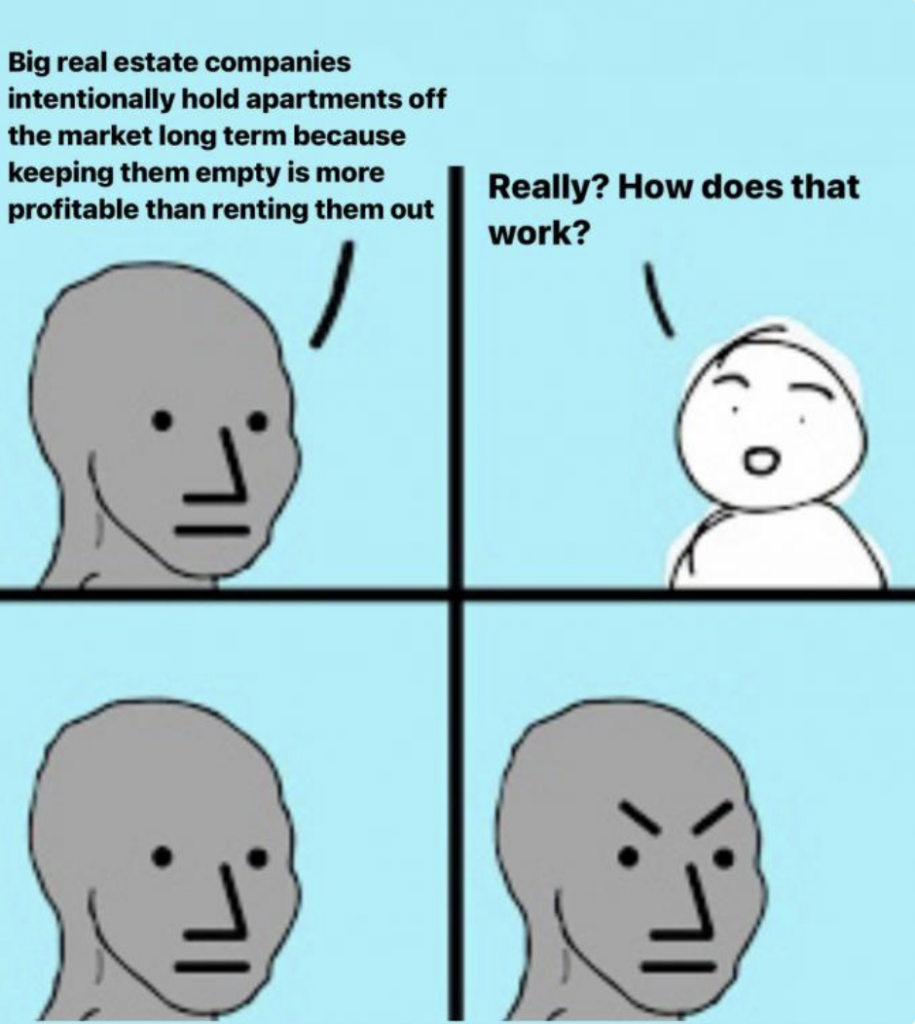NIMBY judge holds that environmentalism requires more global warming (and homelessness)

The American style of adversarial legalism (including endless arbitrary roadblocks placed in front of new construction and judges who feel qualified to substitute their policy judgment for those of more accountable public officials on any matter under the sun) are a crucial contributor to high housing prices and global warming. A case in point is Minneapolis’s highly successful housing reforms, which have been at least temporarily torpedoed by a moronic judge who thinks that “environmental protection” means “more suburban sprawl and long automobile commutes”:
A Hennepin County judge has again ruled Minneapolis must immediately cease implementation of its 2040 comprehensive plan, which has been in effect for the past three years. The city now has 60 days to revert back to its 2030 Plan, according to the order. The city has said it might appeal.
“This court finds that any ongoing implementation of the residential development portions of the City’s 2040 Plan is an ongoing violation of [the Minnesota Environmental Rights Act],” wrote Judge Joseph Klein, who has been presiding over an environmental lawsuit challenging the city’s pro-development ambitions since 2018. “Plaintiffs have outlined numerous environmental impairments that are likely to result by virtue of the full implementation of the 2040 Plan. The court finds that such damage to the environment would be an irreparable harm to the environment, the protection of which is viewed by this state as being of paramount concern.”
To hold that “environmental rights” requires less housing density is absolute bizarro-world nonsense, and it’s one of the things that happen when random lawyers are allowed to unilaterally make important public policy decisions.
While we’re here, I’m amazed by how much traction the NIMBY myth that upzoning doesn’t reduce housing and rental costs because DEVELOPERS will just build LUXURY housing and then hold it vacant to increase rents in prices. The first problem with this is that it is nonsensical even in theory. The second is that there is no empirical evidence to support it:
At the level of a city as a whole, meanwhile, there is no ambiguity in the empirical literature: More housing leads to more affordability. People will not move to a new city just because they heard that there’s a condo tower there with a sick roof deck. It is plausible that, in some circumstances, affluent people already living in a city might move to a new neighborhood because its housing stock has become more desirable. But to the extent that this happens, it would have the effect of reducing demand for housing in other parts of the city. As a result, there is overwhelming empirical evidence that expansions in housing supply slows rent growth at the municipal and regional levels.
In fact, Americans are seeing the power of new housing construction to push down rents right now.
Between 2020 and 2022, America witnessed a huge run-up in rental prices. This spike in housing prices was long in the making. Over the past decade, Americans formed 15.6 million new households but built only 11.9 million new housing units. As the millennial generation aged out of living with roommates (or parents), demand for housing was always poised to surge far past supply in the early years of this decade.
But the pandemic exacerbated matters. The rise of remote work abruptly increased Americans’ demand for floorspace. Many laptop workers who’d previously been comfortable living with roommates decided they needed their own one-bedroom apartment; many of those in one-bedrooms decided they needed a two-bedroom apartment to accommodate a home office; many with a two-bedroom decided they needed a house, etc. Meanwhile, as remote workers trickled out of urban centers into suburbs, beach towns, and other amenity-rich (but previously somewhat job-poor) areas, rents in those places suddenly surged.
But now, rent growth has returned to its pre-pandemic norm with prices advancing at an annual pace of between one and 3 percent, according to real-estate data firm CoStar Group. In June 2023, asking rents were just 1.1 percent higher than they had been 12 months before. Given that wages grew at a far faster clip over that same period, a rental home was more affordable for the typical worker this June than it had been a year earlier.
What explains this deceleration in rental prices? As with any economic development, more than one factor is at play. But the biggest one by far is that developers responded to surging demand by building more housing, which is now coming onto the market. As the Washington Post reports, nearly 1 million new apartment units are under construction right now. More than 500,000 of those units will be available for rent this year, while the rest will follow in 2024.
weird, vacancy rates are the lowest in expensive cities
almost like the “we have 50 bazillion vacant homes and don’t need to build any more housing” talking point is a NIMBY a myth https://t.co/mDgRqW2wYc— sam (@sam_d_1995) July 1, 2022
Developers who build buildings want to sell them, and landlords with vacant apartments generally want to rent them. (Which is why landlords are more likely to initiate evictions when rental markets are tighter.) Also, as much as NIMBYs would like to you can’t prevent people from moving to desirable urban areas with good job markets — the only question is whether they will buy/rent new buildings or buy/rent existing stock at higher prices. Contrary to what the people who brought the stupid lawsuit in Minnesota think, NIMBYism exacerbates gentrification rather than mitigating it. NIMBYism means less disposable income, more global warming, and more homelessness, period.


